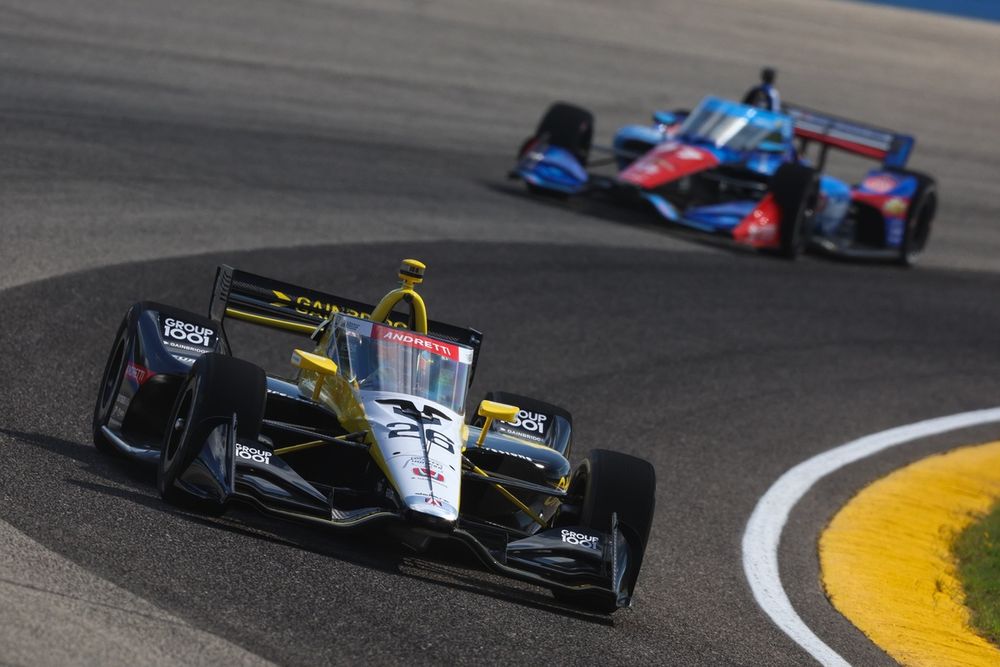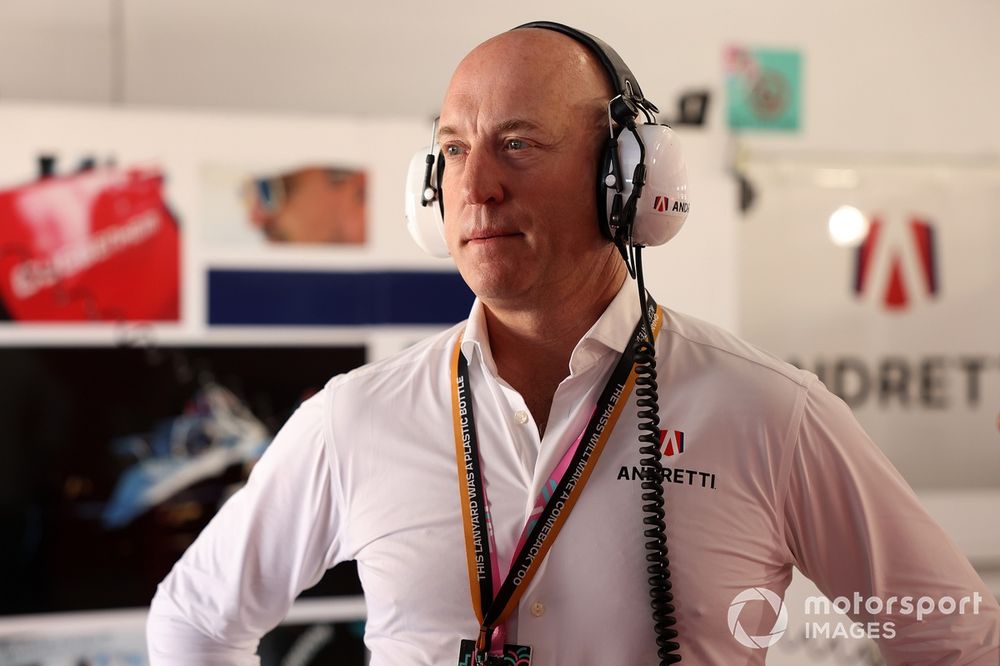As Michael Andretti’s initial’s bid to join Formula 1 was met with resistance last year, United States Grand Prix promoter Bobby Epstein was asked if Andretti joining the series would make an impact on Austin ticket sales: «I think it would make a difference to COTA if we had an American champion,» came the reply.
This was at a time when Logan Sargeant was struggling at Williams, and the American’s presence made virtually no dent on ticket sales across any of the three US races — Austin, Las Vegas and Miami. The lack of results also didn’t warrant a big presence for Sargeant in Netflix hit series Drive to Survive.
It is well documented just how much F1 has grown in the US in the wake of the Netflix show, with Apple’s blockbuster F1 film starring Brad Pitt the next stage of a launch vehicle to take the idiosyncratically European championship into a higher orbit.
But if F1 is to truly smash the US, then its domestic fans need a driver to root for. And that has to be someone who has a chance to thrive and win and won’t just be consigned to the rear of the grid forever.
That phenomenon is not unique to the US. In the early ‘90s, Michael Schumacher’s status as Germany’s maiden world champion provided some much needed glue to the recently reunified nation, its first bona fide sporting superstar that caused a swell of F1 interest in the country never seen before, or since.
Fernando Alonso also swept away Spain as he arrived a decade later and took two early world championships, igniting passion for F1 in a country that had been somewhat of a deadzone for the series and had been long dominated by two wheel racing rather than four.
Logan Sargeant, Williams FW45
Photo by: Mark Sutton / Motorsport Images
In IndyCar star and Cadillac test driver Colton Herta, America perhaps has its best shot in a while to get there. But in a saturated North American sports market, an American F1 driver will have to stand out.
«He needs to be successful,» former Haas team boss Guenther Steiner told Autosport. «It’s not an automatic thing, just having an American driver, because we had Logan Sargeant in Formula 1. Obviously having Cadillac will help as well, a big American brand, but it needs to come with success and then it will work.
«Formula 1 in general is a global sport, the nationality counts very little. But if you have an American winner that wins a championship, you would have all America behind it. It’s pretty clear.»
There’s no misunderstanding about what that will take. Herta still has a lot of hurdles to climb, from gaining the final superlicence points required, getting back up to speed in European racing in F2 next year, and eventually convincing Cadillac that he is the right guy to succeed either Valtteri Bottas or Sergio Perez. And that’s before considering the road Cadillac itself has to walk to become a competitive force.
But what speaks volumes for the 25-year-old Californian’s chances — other than his pedigree in IndyCar — is the commitment Herta has shown already: he’s abandoned a comfortable position near the top of the food chain in American open wheel racing for a year in an F1 feeder series, with no guarantee of a promotion after that.
“It’s a super big risk,» Herta acknowledged on the Off Track podcast hosted by his past and present IndyCar peers James Hinchcliffe and Alexander Rossi. «If I didn’t think that I can do it, I would stay in IndyCar. But I believe in myself, and I believe I’m fast enough.”

Colton Herta, Andretti Global
Photo by: Penske Entertainment
That faith is also shared by the mastermind behind the idea, TWG Motorsports CEO Dan Towriss, whose group not only owns the Andretti Global IndyCar squad Herta has represented for the past six seasons, but also majority owns the Cadillac F1 bid.
«He’s taking this big risk to leave a tremendous career in IndyCar and his dream is to be in Formula 1,» Towriss told F1TV in Monza.
With Towriss noting that the «entitlement model from the US» hasn’t worked out in previous attempts to make it across, F1 hasn’t seen a successful American open wheel to F1 transition since Juan Pablo Montoya at the turn of the century, fittingly the man posing Towriss the questions.
That’s why Herta’s approach is so crucial. He could have probably squeezed his way in by staying in IndyCar and collecting superlicence points for FP1 outings along the way. But the nine-time IndyCar race winner is doing it the right way by accepting the vagaries of F2 and a shock IndyCar career pause, fully immersing himself in his «last shot» at F1.
«I think learning the tracks and tyres, we want to show that respect for European open-wheel racing and for Colton to come in with a body of work, knowing what’s in store at these tracks and building up for Formula 1,» Towriss added. «We’ve got testing in prior cars, we’ve got FP1s; the total package to make sure Colton has every chance possible.»
What’s at stake isn’t just Herta’s own F1 chances, but also the perception that he will be creating for any of his US peers who harbour similar ambitions. An F2 seat in isolation is already a lose-lose situation. If Herta excels it will be taken for granted, while a tough year — which given the capricious nature of F2 is entirely possible, even beyond his own control — will already start damaging that perception.

Dan Towriss, Andretti CEO
Photo by: Andrew Ferraro / Motorsport Images
F1 is a notoriously difficult nut to crack for drivers outside of its own ecosystem and not brought through the FIA’s single-seater ranks, which Herta got a taste of before heading to IndyCar. Almost every team now has its own junior academy, going all the way down to karting to scout the next big thing. It doesn’t happen very often for someone of Herta’s background and status to be getting an opportunity this late, even if he’s only 25.
It is somewhat of a moonshot then, but while Herta says he is betting on himself, perhaps F1’s owner Liberty Media should do too. There’s only so much the commercial rightsholder can do to further promote and elevate the series in the US without it having an active participant, rather than the passive backdrop of the Las Vegas Strip.
If Herta does make it and starts getting results in a team representing American powerhouse General Motors no less, then that offers F1 a whole new, patriotic dynamic to make further inroads on the US market.
Like Herta, Cadillac still has a long way to go and isn’t expected to set the world ablaze in its first two seasons. But when, or if, Cadillac is ready for the big time, perhaps Herta will be too. There is a reason why people enjoy gambling big, and that’s because the rewards scale accordingly. For a driver of Herta’s status, gambles don’t come bigger than this.
In this article
Be the first to know and subscribe for real-time news email updates on these topics
Subscribe to news alerts







